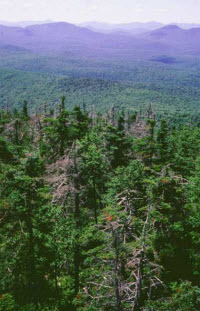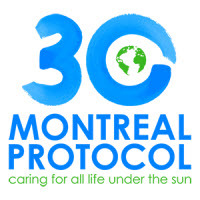Air Mail: News about NY Air Quality
The New York State Department of Environmental Conservation sent this bulletin on 10/16/2017 12:00 PM EDT |
| DEC Delivers - Information to keep you connected and informed from the NYS Department of Environmental Conservation |
| Share or view as a web page || Update preferences or unsubscribe |
|
|
|
In This Issue:
Protect the Colorful Fall Foliage in New YorkNow that October is here, it is time to get excited for the leaves to change their color! In New York State, the Adirondack Mountains are especially well known for their beautiful fall colors. However, acid rain, an acidified form of precipitation caused by air pollution, can damage and kill the trees that create the autumn colors. The state and federal government and residents of NYS have worked hard in the past to curb pollution which acidifies the rain. The fight is not over though. In order to continue to protect places like the Adirondacks from acid rain, pollutant levels must remain low throughout the nation. You can help prevent acid rain by making simple changes, which will help keep the autumn colors bright in New York State.
A Bit of Air History Helps Clean Up Air Concepts: The Montreal Protocol and OzoneSeptember marked the 30th anniversary of the Montreal Protocol. The Montreal Protocol was an international treaty created by the United Nations that outlines the phase out of over 100 chemicals that cause the depletion of the ozone layer. While DEC supports the protection of the ozone layer, it is ground-level ozone that can be harmful to public and environmental health. Ozone found in the upper atmosphere, or stratosphere, protects us from the sun’s harmful rays by filtering ultraviolet (UV) light. In contrast, ground-level ozone is produced when pollutants from burning fossil fuels react in sunlight to form smog. Ozone and smog can cause serious respiratory and cardiovascular health concerns, especially for children, the elderly, and those with pre-existing respiratory conditions. Unfortunately, ground-level ozone is unable to move into the upper ozone layer where it would protect instead of harm us. It is vital that we decrease air pollution to both preserve the upper ozone layer and to protect the air we all breathe. The Burning Question: Fall LeavesDid you know that it is illegal to burn leaves in NYS? Burning vegetation, other lawn debris, and trash releases pollution in the form of smoke and soot. Smoke can prove harmful to you, your pets, neighbors, wildlife and the environment. Burning leaves and other lawn debris also increases the likelihood of wildfires. Fires are also regulated in New York State. Lawn debris, including leaves, is not approved fuel for open fires and should be properly disposed of or used. Instead of burning your leaves, you can:
See our website for more tips on what to do with fall leaves. Environmental Notice Bulletin (ENB) NoticeStay Informed about Your Air QualityNew York’s traditional ozone season ends with the start of October. DEC still publishes daily ground-level ozone and particulate matter pollution forecasts year round using a scale called the Air Quality Index (AQI). DEC sends an air quality alert when there is a high AQI value, which indicates polluted air. Individuals with pre-existing respiratory and cardiovascular conditions or individuals that exercise outdoors should take caution during an air quality alert. The AQI can be accessed in 3 ways:
We would like to know what you think. Please send your Air Mail! questions or comments to us at DAR.web@dec.ny.gov. |



